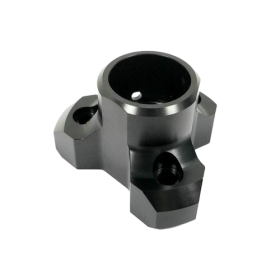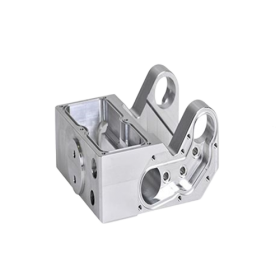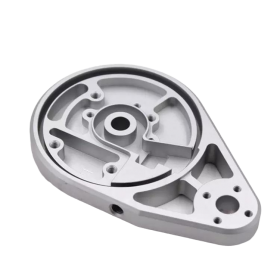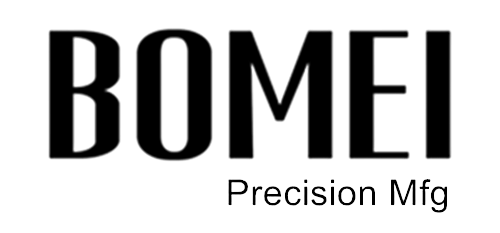New Products
-

Custom Turn-Mill Combination brass parts
-

Custom Turn-Mill Combination parts
-

Precision CNC Turning Parts Stainless Steel shaft accessories
-

Precision CNC Custom Made Colorful Anodized Aluminum milling parts
-

Custom CNC Milling Automated Machinery and Equipment Parts
-

OEM/ODM Custom High Precision Metal CNC Machining/Milling/Turning Service CNC Turning Part
Common Problems and Solutions in POM Plastic CNC Processing
What Is POM Material?
Polyoxymethylene (POM), commonly known as acetal or Delrin®, is a high-performance engineering thermoplastic prized for its excellent mechanical properties, dimensional stability, and low friction characteristics.
Key Challenges in POM Plastic Processing
Despite POM's outstanding mechanical properties and wear resistance, several technical challenges persist during processing.
Cracking Issues: POM materials are prone to cracking during processing, particularly during high-speed CNC machining or deep cutting. This occurs due to the release of internal stresses or uneven cooling. To minimize cracking, proper cooling and machining parameters are crucial. Ensure uniform cooling rates during processing to avoid abrupt temperature changes. Using appropriate cutting fluids and adjusting cutting speeds also helps reduce the risk of material cracking.
Deformation Issues: POM plastic exhibits high moisture absorption, making it susceptible to deformation during processing due to humidity and temperature fluctuations. POM expands when heated and may contract upon cooling, particularly when machining large-sized or complex-shaped parts. Additionally, excessive cutting forces during machining can cause deformation, especially in thin-walled or micro-structures.
Tool Wear Issues: POM has relatively low hardness. Although it generates less heat during machining, its sticky properties can cause rapid tool wear. Selecting appropriate tool materials and coatings, along with optimizing cutting conditions, effectively extends tool life. Using high-quality carbide tools or coated tools with precise cutting parameters helps reduce tool wear and improve machining quality.
Surface Quality Issues: Ensuring surface quality is a significant challenge in CNC machining of POM plastic. Due to the material's properties, surfaces may exhibit scratches, hairline marks, or other uneven textures. To achieve smoother surfaces, cutting parameters must be adjusted, suitable tools selected, and alternative machining processes—such as finishing operations or post-processing—employed as needed to enhance surface finish.
Causes and Solutions for Deformation During POM Machining
Deformation is a common challenge when CNC machining POM (polyoxymethylene). Below are four primary causes of deformation and their solutions:
1. Cutting Heat: POM exhibits poor thermal stability and is heat-sensitive. Insufficient cooling during machining can cause rapid deformation.
Solution
· Maintain sharp cutting tools to minimize heat generation during machining;
· Reduce the depth of cut per pass and divide the machining process into multiple passes;
· Increase the flow rate of coolant.
2. Residual Stress: Engineering plastics exhibit high thermal expansion coefficients. Removing residual stress during machining with large allowances may cause deformation.
Solution
· Select and prepare materials appropriately;
· Employ symmetrical machining methods for substantial material removal to counteract stresses and deformation;
· Adjust machining allowances, maintaining thicker material where possible to minimize deformation during stress release.
3. Clamping Deformation: During CNC machining, POM material may deform under clamping forces, with the workpiece reverting to its original shape upon release.
Solution
· Modify clamping methods. For instance, use a vise on the worktable with cushioning pads or apply adhesive bonding;
· Employing vacuum cups for larger workpieces, provided the surface is sufficiently flat;
· Securing the machined surface with a vacuum cup after fixing one side with adhesive and ensuring the opposite side remains flat.
4. Elastic Deformation: POM exhibits strong elastic properties. During machining, the material in contact with the tool undergoes internal bending during cutting. After tool removal, the machined section may exhibit slight deformation.
Solution
· Perform multiple tool compensation adjustments based on cutting effects;
· For machining thin sections, employ repeated cutting passes to reduce elastic-induced dimensional deformation.
By rationally adjusting machining processes and parameters, deformation issues in POM CNC machining can be effectively controlled, ensuring consistent quality and precision.

 Evan Xiao
Evan Xiao